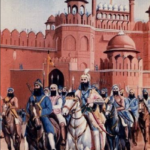The selection of the historic golden ‘Sengol’ or sceptre from the non-brahmanical Thiruvavaduthurai Adheenam for the new Parliament building holds a deep significance. Prime Minister’s decision to choose this symbol from a non-brahmanical institution highlights the recognition and acknowledgment of the diverse cultural and religious heritage of India.
Athena, which encompasses monasteries established to promote Saiva ideology, plays a crucial role in Tamil culture and history. These monastic institutions have been instrumental in nurturing the Tamil language, preserving Tamil literature, and upholding Saiva Siddhanta principles. The Thiruvavaduthurai Adheenam, known for its rich legacy, holds a prominent place among the Athena monasteries.
The golden ‘Sengol’ itself represents more than just a ceremonial object. Derived from the Tamil word ‘semmai’, meaning righteousness, the sengol carries a deep cultural and symbolic significance. Traditionally, it has been associated with the transfer of power and the responsibility to rule justly and fairly. This ancient tradition, found in texts such as the Purananooru, Kurunthogai, Perumpaanatrupadai, and Kalithogai, dates back nearly 2,000 years to the Sangam Age.
Decision to include the ‘Sengol’ within the new Parliament building demonstrates a desire to embrace the diversity and inclusivity of Indian culture. By selecting this symbol from the non-brahmanical Thiruvavaduthurai Adheenam, the Prime Minister emphasizes the importance of recognizing and honoring the contributions of various religious and cultural traditions in shaping the nation’s identity.
This decision also aligns with the broader objective of promoting social harmony and equality. The non-brahmanical heritage of Athena monasteries represents a stance against caste discrimination and inequality. It signifies a commitment to fostering a society where every individual is treated with dignity and respect, irrespective of their social or religious background.
The inclusion of the ‘Sengol’ in the new Parliament building sends a powerful message about the need to celebrate and embrace India’s diverse cultural fabric. It reminds us of the rich tapestry of traditions and ideologies that have shaped the nation throughout its history. By acknowledging the non-brahmanical heritage of Athena and the symbolism of the ‘Sengol’, Prime Minister reinforces the idea of unity in diversity and underscores the importance of preserving and promoting India’s pluralistic ethos.
As the new Parliament building stands as a proud symbol of Indian democracy, the presence of the ‘Sengol’ serves as a reminder of the inclusive values that underpin the nation’s governance. It encourages a spirit of collaboration, mutual respect, and a commitment to upholding the rights and aspirations of all citizens.
A symbol of North-South cultural connect

Leave a comment




